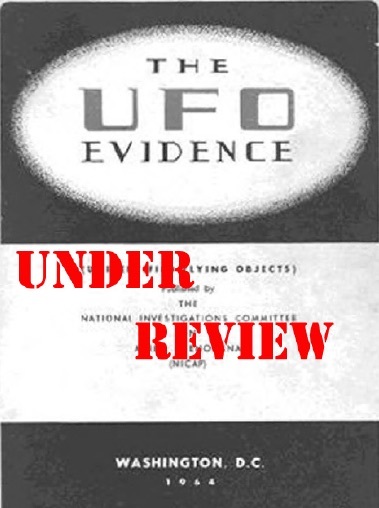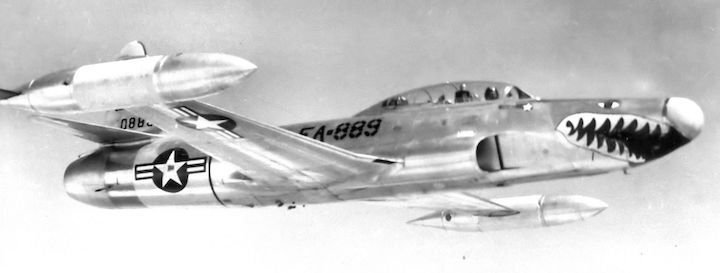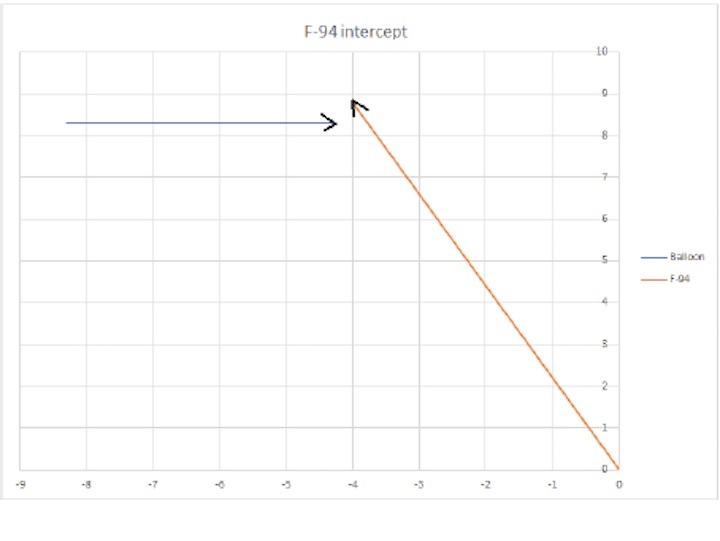
January 9, 1953 - Northern Japan
January 9, 1953--Northern Japan. Pilot and radar observer of an F-94 jet interceptor saw and tracked a rotating UFO. Air base Commander, Col. George W. Perdy, stated there was “remarkable corroboration as to description of the cluster of lights by people widely separated who hadn’t so much as talked to one another.1
There is no notation to any other section or additional information.

Probable source of information
Because most of NICAP’s sources seem to come from newspapers, I searched the newspaper archive and found the probable source of the information for this entry. On January 21st, an article from the Associated Press (AP) appeared in multiple newspapers across the country describing several incidents over northern Japan. The first aircraft intercept mentioned involved Col. Donald J. M. Blakeslee:
The intelligence report said Blakeslee closed on the object after extinguishing all the lights on his aircraft “to make certain he was not getting some reflection from his canopy surface. When all lights were out, he noticed no change in the appearance or brilliance of the object and its color scheme.”
The object increased speed and vanished in 30 seconds. Blakeslee made a second approach, five minutes later, with all lights on. This time the object disappeared in five seconds.
The report noted this as “a tangible point of coincidence,” but did not speculate whether Blakeslee’s lights could have been seen from the object.
It also pointed out that Blakeslee, not knowing the size of the object, had no way of knowing how close he got to it.2
The second sighting involved an F-94 with a radar contact:
The air force said a rotating cluster Jan. 9 near an air base in northern Honshu” was observed visually by a pilot of an F-94 jet interceptor for approximately one minute . . . Radar contact for approximately two minutes was verified by both members of the crew”. The F-94 carries a radar observer.
The report called the object “a light that appeared to continuously change in color from red to white to green.”
The pilot, Lt. Melvin E. Conine (hometown unavailable) said, “I immediately turned into the light but lost sight of it shortly after ... I searched the area but made no further contact.”
The radar observer, Sec. Lt. Walter D. Lawley, Jr., of Tuscaloosa,Ala., said the radar “blip was unlike regular return usually gotten from another aircraft, being very weak and fuzzy instead of sharp. The radar set was in good condition both before the pickup and after.” 3
There seems to be some confusion about the dates. There are references in the article to events that happened on 29 December 1952. This involved a B-26, a fighter jet, and ground observers. These were discussed in SUNlite 8-6 and Blue Book had determined the likely source to be the planet Venus. I agreed with that conclusion. Additionally, the narrative mentions that Blakeslee’s event transpired on the night of those observations instead of January 9.
Blue Book file
Blue Book has a file for this date from Northern Japan. This is the sighting from the AP account mentioning Lt. Conine. Missing from the file is an intelligence report from the date or any mention of Colonel Blakeslee’s incident. Further searching found an intelligence report in the March 31, 1953 Honshu folder referencing Blakeslee’s FLYOBRT of 31 December 19524 and the description of his actions on December 29 mirrors what the AP story states about Blakeslee.5 This indicates that Blakeslees actions were on 29 December. The second sighting by Blakeslee happened on his return to base after chasing Venus and was towards the South-southwest and not the western sky. It might have been the star Fomalhaut setting. It is difficult to say with such a brief sighting or more information. In any case, it seems the only sighting on 9 January was the Lt. Conine attempted intercept.
The file lists the following particulars about the event6:
The time was at 0950Z (1850 local time).
The interception attempt was made near Misawa AFB in Japan.
The object changed from red to white to green. The visual sighting lasted one minute.
The radar contact was a weak fuzzy return and lasted two minutes.
The F94 was at 35000 feet altitude, IAS 220 knots, and heading at 360 degrees magnetic.
At 24000 yards (about 11.8 NM), the aircraft picked up the target at a position angle of port 20 degrees and an elevation angle of -10 degrees.
• The pilot turned to 335 degrees heading and then saw the target visually.
• The object was still at 20 degrees port (remaining constant) but the elevation angle began to increase in the negative direction.
• The radar locked on at 5000 yards.
• The radar contact broke at 200 yards with the target at 20 degrees to port and elevation angle of -40 degrees.
• The aircraft lost the contact once it overshot the target.
• Winds at 30000 feet were 90 knots from 270 degrees and 130 knots from 280 degrees at 35000 feet.
Blue Book concluded that this was a possible balloon launched from Misawa AFB 50 minutes prior to the event.

Analysis
The Blue Book file is missing some pertinent data like the actual location of the aircraft at the time of the intercept. The news reports indicated it was near an airbase in Northern Japan. Misawa matches that description but we still don’t know how far from the base or what direction to see if the Misawa balloon could have caused the sighting. However, the reported behavior does appear to match that of a balloon. The combined closure of wind and the aircraft is about right for an aircraft passing over a balloon. Using the data available I made an approximate intercept course (both axes are in NM from the F-94s initial location). I assumed the winds were moving at about 120 knots from 270 degrees azimuth. For the F-94, I corrected the Indicated Air Speed of 220 knots at 35000 feet to a true air speed of about 290 knots. Because the object was always 20 degrees to port, I made an assumption that the original 20 degrees to port was when the plane was on a bearing of 335 degrees magnetic and not 360 degrees. Additionally, the target was estimated at 24000 yards, which is about 11.8 nm. I then simply plotted the paths of the aircraft and balloon using the courses and estimated speeds in 30 second increments. The end result was that, after two minutes, the two paths got close enough to accept the explanation of a balloon being the source of the event.
As I had already stated, the other sightings mentioned in the AP story/NICAP’s best evidence, happened on 29 December and was covered in SUNlite 8-6.
Conclusion
There is no good reason to dismiss the possibility that the source of the 9 January 1953 F-94 intercept attempt was a balloon. It should be removed from the best evidence category.
Quelle: SUNlite 1/2022
